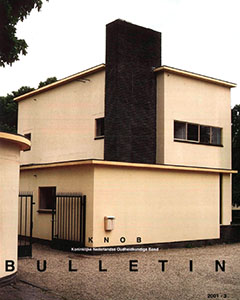Indexering ESCI / Scopus


E.H. Mattie en C. van Soestbergen: Het Oost-Indisch Huis te Amsterdam: problemen bij de reconstructie van een historisch interieur. C.S. Oldenburger-Ebbers en L. Reiman: Nogmaals Petersburg langs de Vecht. Een vergelijking tussen twee plattegronden voor deze buitenplaats uit de Collectie Beudeker en uit de Collectie van Peter de Grote. G. ten Caat en W. Frisart: Dudok - Noorderbegraafplaats in Hilversum. Het is niet alles geel wat er blinkt. Wim Denslagen: The artificial life of heritage.
The article deals with the reconstruction of the meeting hall of the 'heren XVII' of the Dutch East India Company in the Amsterdam East Indian House as a representative reception room of the Amsterdam University. The essence of the article is the moral question to what extent a reconstruction does justice to the history and historical values of a historically important building.
The question is further worked out on the basis of the questions whether the reconstruction itself is to be called successful and whether the chosen location of the hall is historically correct. The...
The Peter the Great Year 1996 / 1997 resulted in a renewed interest in Peter the Great's country houses in the Netherlands in 1696/1697 and 1716/1717 and the places and persons he visited at that time. On several occasions he stayed at the country estate Petersburg along the Vecht, owned by his friend Christoffel Brants. Brants even had a Russian bathing stove built for him.
Consequently, it is not surprising that in 1717 Peter the Great received a floor plan (with buildings) of Petersburg as a gift from Brants. The well-known collector of prints, naturalia and antiquities...
De manier waarop de overheid van Kathmandu in Nepal de tempel van Akash Bhairava aan Indra Chowk restaureert, lijkt overgenomen van specialisten uit het Westen. Het uitgangspunt hierbij is de reconstructie van de oorspronkelijke toestand van het monument.
De meest recente westerse inzichten, die juist de nadruk leggen op het bewaren van een monument in zijn overgeleverde toestand, zijn waarschijnlijk te exclusief en genieten over het algemeen zo weinig erkenning, dat ze er geen of nauwelijks invloed hebben. In scherpe tegenstelling tot deze door de overheid gesteunde manier van...


open access mogelijk gemaakt door Stichting OpenAccess
